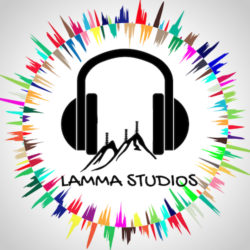The following post is reposted from Joshua MacCluer’s blog from December 2015.
November came with a big project for us at the HK Phil performing the 9 Beethoven Symphonies with our music director Jaap van Zweden. It was an intense month! The boss has very high standards for Beethoven, it was hard work, and it came out very well. After thinking about and playing Beethoven symphonies for a month I have some performance tips to share with other trumpet players on this important segment of the orchestral repertoire. Keep in mind these are only my opinions and there are many ways to approach any subject. Without further ado here we go:
First of all, Check Your Ego at the Stage Door
Beethoven trumpet parts are not an opportunity for glory. The parts aren’t very important and there’s virtually no melodies, solos, or thematic material in the trumpet parts. When there is something remotely important like the second movement of #5, the trumpet section is almost always doubling the horns or woodwinds. Trumpet playing in Beethoven is an opportunity to support the musical cause at large, performing largely thankless work for the greater good.
However, playing trumpet on Beethoven is not easy. There are many opportunities to misstep and ruin everything. It is difficult playing, without much chance to get airflow going, lots of jumping in and out of the flow of music, big intervals, unison high notes to be picked off, taxing passages and many opportunities to play poorly. Thus is the lot of the trumpet section in Beethoven. Play well, and if it goes well no one will notice. This is the best case outcome for us in this repertoire.
You are Part of the Rhythm Section
Playing Beethoven requires the trumpet section to assume a different role in the orchestral texture. Beethoven trumpet is mainly a rhythm section instrument. Much of the playing is with the tympani and in my opinion the #1 goal for trumpet players in Beethoven should be to play with terrific rhythm and help keep the orchestra grooving.
Sit Near the Tympani
When we play Beethoven in Hong Kong, we move to the other side of the stage and sit right next to our excellent tympanist James Boznos. This is very helpful to hear and see each other clearly and it is quite a bit more difficult to lock in the rhythm from farther away. I suggest for all performances of Beethoven to get as close to the tympani as possible on stage.
Listen to the Rhythm Section as a Whole
It is recommended to listen for the sound of the rhythm section as a whole instead of just the trumpet section. That means assembling together in your ear the trumpets, tympani, bass and other string pizzicati, the French horns and whatever woodwinds Beethoven may throw in from time to time. That composite sound is what to listen for. The trumpets add only part of that sound, and sound construction of the rhythm section is an interesting subject.
I believe that generally the main articulation should come from the tympani. This means to make sure the tympani articulation leads the sound of the group. Trumpets should polish out the sound of the drum and add higher overtones to the articulation. Listen to the sound of the decay after the tympani articulation and try to fit in to that.
Generally speaking in Beethoven the trumpets should articulate cleanly and firmly and then decay right away, just like a drum or bell. Only very rarely should we sustain a note full volume, such as in the funeral march of #3. Usually the front of the note is what matters and then someone else needs to be heard.
Prioritize rhythm and dynamics over pitch and sound.
Not to say that we shouldn’t play in tune with good tone. But the rhythm is the most important element we provide in Beethoven. Make sure it is rock solid before worrying too much about the pitch. And so-so tone can be excused if the trumpets are in the groove.
Stay in the Groove
Beethoven writes a lot of fast music, especially his middle movement scherzi. It is easy in the midst of these quick movements to space out and get out of the groove. But even one bar out of the groove from the trumpets can cause big damage to the performance. So stay in it! Count rests while still grooving and stay engaged with the music when not playing. Protect the groove always.
Use Intelligent Octave Displacements
A special challenge in Beethoven for the second trumpet player is the octave displacements for certain notes. Due to the design of the contemporary trumpet, written Ds and Fs were only available in the upper octave. This led to Beethoven writing wide intervals for the second trumpet. A second trumpet player will encounter uncomfortable 12th jumps around the instrument and touchy exposed soft high note unison notes with the first trumpet. I believe that in many of these situations if he had that note available in the lower octave Beethoven would have chosen the lower octave for the second trumpet.
I personally do not mind the second trumpeter taking many of the second parts down the octave. Accuracy before glory! I believe this would reflect the wishes of the composer if he had modern trumpets. Also it is much easier to get it right playing in octaves instead of in unison.
Also you may notice on these same written Ds and Fs that the tympani usually drops out on those notes. In that case the rhythm section is missing the lower register entirely, so that is another good reason to consider taking the note down the octave. Also consider that without the tympani the rhythm has less articulation, so I try to play with a little more punch when the tympani lays out.
Make Friends with Your Rotary Trumpet
Typically nowadays, even the American and Asian orchestras are using rotary (German) trumpets for Beethoven. For an American trained on the piston trumpet, this makes Beethoven much more difficult. Before I start playing Beethoven I make friends with my rotary trumpet for a week or two beforehand, playing lyrical work, scales, arpeggios, dynamics, articulation, and improvising on the instrument until I feel comfortable. This makes a difference, as it is difficult to make friends with the trumpet while playing Beethoven’s parts. This percussive trumpet writing is not the way to get comfortable on an instrument.
Listen for the Real Melody
A lot of trumpet players find places in Beethoven when they think they have a very important part, and they play it loudly like its the most important thing happening. While I appreciate their enthusiasm, usually there is a more important melody going on in the woodwinds or elsewhere and the trumpet part is just reinforcing it. A good example is in the slow movement of the 7th Symphony when the trumpets have the main rhythmic motive in unison written Ds. Usually trumpet players blast this out, and in doing so they completely obliterate the 16th notes in the woodwinds which are much more important than the trumpet part.
Instead try to listen when playing these parts, and figure out who really has the melody. Then approach the part with the intention of supporting that line however we best can. This attitude will not get us glory when we play Beethoven, but that is not the destiny of the good trumpet section. Don’t worry, there is some Mahler scheduled for next month!
Finally I would like to write a little bit about each symphony, and call attention to a few places that could potentially trip up the unsuspecting trumpeter. Happy Beethovening!
#1 is a delightful classical symphony in C without much to trouble the trumpet section. The second trumpet player has a challenging bit with exposed low Gs in the second movement that may need to be quite soft.
#2 is pretty easy and probably the easiest of Beethoven’s trumpet parts. There is one fun bit in the end of the first movement where the trumpets can play out on a crunch chord and a big moment for the second trumpet.
#3 is the first great Beethoven symphony. The Funeral March has a few moments where the trumpet section can play out and a big arpeggio crescendo that I would play as much as I could if the boss had let me. The scherzo is quick, don’t get left behind! There is also an opportunity to rewrite the trumpet parts to play the big melody in the first movement that conductors used to do a lot but is not falling out of style.
#4 is delightful and easy. It has a lot of fun low concert Fs for the second trumpet. It has another fast scherzo to keep up on.
#5 is one of the best Beethoven trumpet parts and my favorite of the symphonies. There is much danger of being late in the first movement, off the eighth rests. Keep subdividing and do not hesitate! The second movement has something approaching a melody for trumpet and horn. Make sure it is in tune and well blended with the horns, and practice making the diminuendo on the last e and g while keeping the pitch steady. The last movement is a bit chopsy and it is worth considering an assistant.
#6 is also easy except for the first entrance. After sitting around for the first two movements, the first entrance in the scherzo ends in a solo trumpet and violins playing a e and c diminuendo. Its a great place to play out of tune or otherwise screw up an “easy” thing. Make sure to warm up the horn before the entrance! This symphony also has the highest note in Beethoven’s symphonies, a high Bb in the storm scene.
#7 is the nemesis of many trumpet players and by far the most difficult. It has so much difficult to it from the first note to the ending. My advice for the beginning: practice the entire melody the first four bars and approach the trumpet part as a part of the melody and not isolated notes. The first movement dotted rhythm benefits from practice on many notes. Try to get in the physical habit of producing that rhythm without strain. The third movement long note is a famous place to go lightheaded. Breathe very slowly and with relaxation before the entrance. Stay loose during the long note! The final movement is very taxing. Use an assistant or learn to play very efficiently. Sometimes the trumpets can trade off and get a little rest by taking a few bars off when playing unison Ds.
#8 is also quite tricky as it is high for the 1st trumpet. Not much is exposed, though so just try to blend with the woodwinds and don’t stick your neck out too far.
#9 is one of the greatest expressions of spirit in human history and is a joy to play. The 4th movement, that is. First you have to get through the first 3 movements. The first movement is all rhythm. Never is the trumpet’s role as a rhythm instrument more obvious. Same for the second movement, it’s fast and very important to stay in the groove. The third movement has just one important thing in it for the trumpets, and some conductors like this part played very big with the last note held out very long. The last movement involves playing a lot of unisons with the choir that will not feel in tune. That’s ok, just enjoy it. No one ever feels in tune with sopranos screaming high As behind them. There is even a second trumpet solo, where it is easy to get caught up worrying about the pitch and play with so so rhythm. Avoid the temptation! The rhythm is most important here. And save some energy for the ending!

